Wild This Week
Your weekly wander on the wild side – with voles, galls and birds of prey soaring through blue skies.
The late summer sun has had me returning to the meandering chalk stream at RSPB Fowlmere again and again. Each visit, a different part of the reserve sings.
As you enter, you choose your path on a forked, gravelly track. Both routes wind around a corner, so you can’t see what’s ahead. On my first of three visits, I chose the opposite path to usual: right.
As you round the bend, there’s a grassy meadow on the right and tall trees. Common Reeds line the path, currently catching the sun on red seeds.
And in such sunny weather, you might catch a glimpse of birds with their wings splayed out, eyes half closed – sunbathing. Usually, it’s male Blackbirds I see in this pose, or Robins and Dunnocks. Supposedly, the warmth of the sun on their jet black or brown feathers helps to kill off some of the mites and other parasites.
This time, a young Wren was so absorbed in its feather maintenance that it didn’t notice me watching. Its usually neat, stubby tail was fanned out beautifully for a moment before it took flight.
The first hide, the Drewer Hide, is just around the corner. It looks out over the waterway, with ducks, geese and Moorhens foraging in a pretty clearing in the reeds. I usually only give this hide a cursory visit, as I rarely see anything else. But today, I had received a tip-off that a family of Spotted Flycatchers was in attendance.
And so they were – bursting out of the tree to grab small insects in flight, then back into the tree before I could snap a shot! I love these drab little birds, they have such charming faces. And they’re hard to see in the few short months that they’re here! Look out for bursts of activity in tall trees and over waterways.
A feeble, high-pitched call could be heard from deep in the reedbeds. According to the Merlin app, it was a Marsh Harrier. But surely a huge bird like that doesn’t make such a small, whining sound?

Well the young ones do, and this young one was trying to encourage her dad (above) to drop his kill – perhaps a young partridge – to her. The adult began crying too, though a much stronger sound from him. He was insisting she take to the wing and catch the food mid-air. She had other ideas!
As he flew round and round, he attracted the unwanted attention of a passing Buzzard.
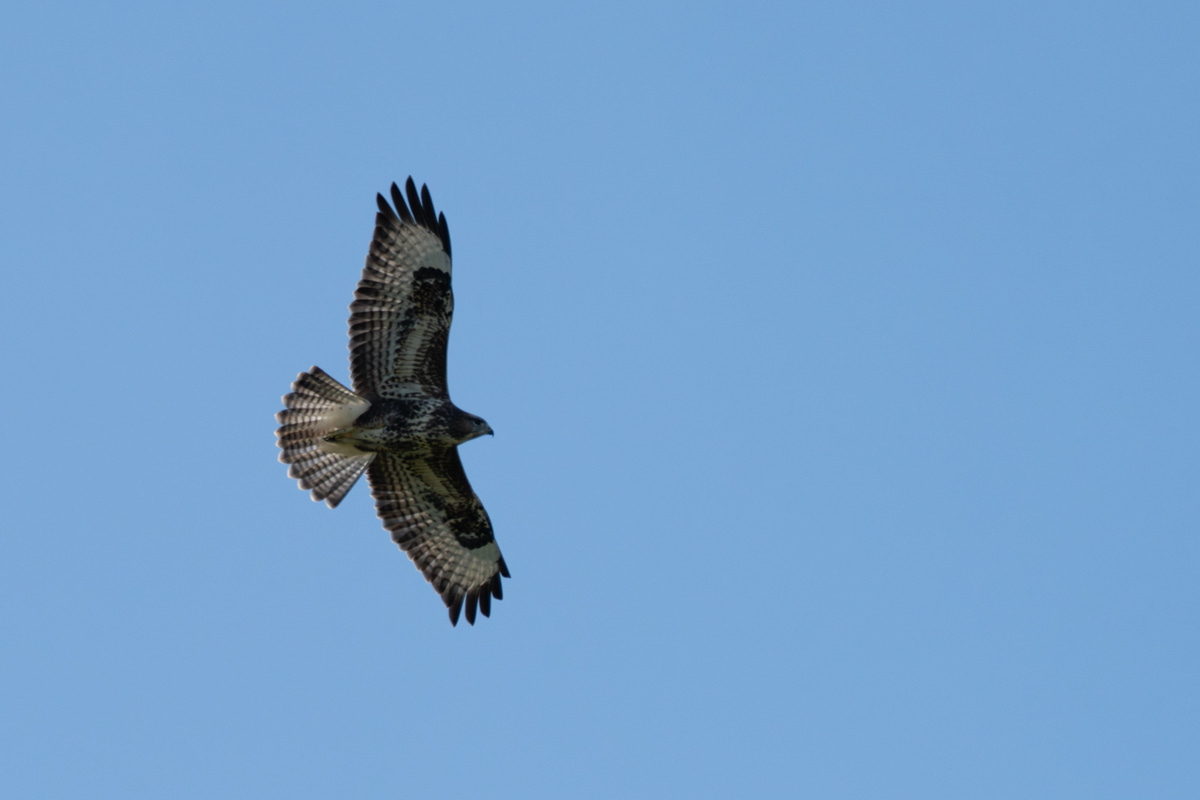
Fortunately, both adult birds seemed to have full crops, indicating they had already fed well that day. The Buzzard abandoned his efforts fairly quickly, and the Marsh Harrier kept hold of his spoils, begrudgingly delivering them direct to his offspring safely nestled among the reeds.
Further on from the hide, the path joins up with the chalk stream. And here lives one of our most charming mammals – the Water Vole. This is a good time of year to see them, especially in the morning, as the young are feeding independently outside of the nests now.
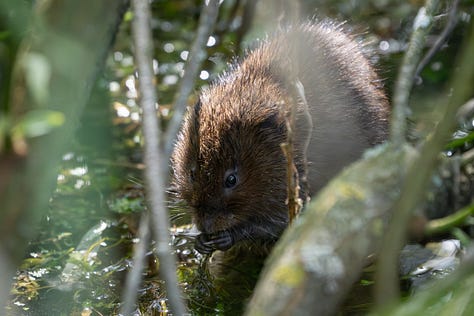
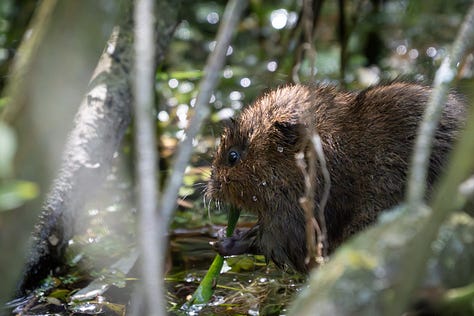
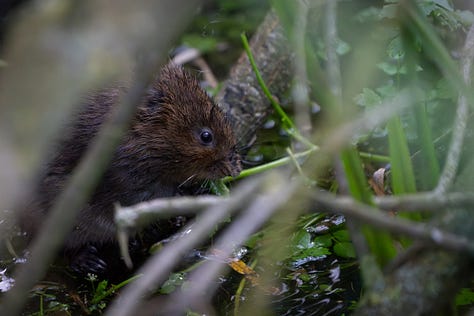

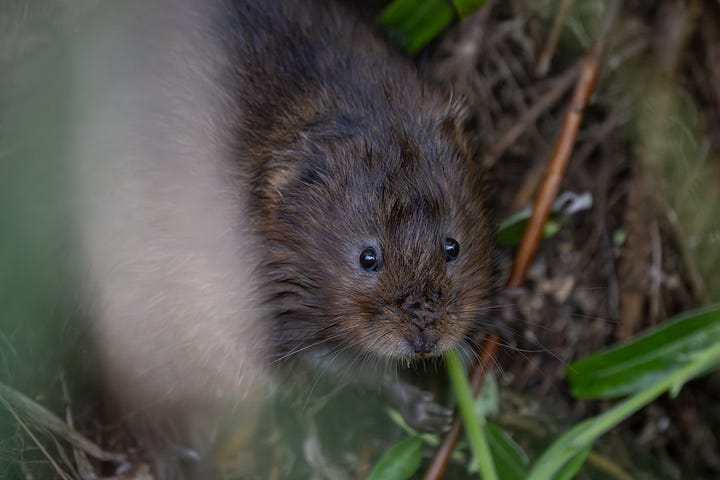
The path and stream are also lined with flowering Hemp Agrimony at the moment, which the bees love – and so do I!
Also known as ‘raspberries and cream’, it’s not actually related to Hemp at all. Apparently, if you cut the stems it has a sweet aroma, but I decided against cutting any down on the nature reserve to find out.
Another highlight at Fowlmere is the range of huge old Willow tree trunks along the path and stream. There are several fallen – some dead, some still producing leaves – with knurls and knots and twists, too big for me to get my arms around.
This one was home to Chicken Of The Woods, so safe to at least try to get my arms around. The next was home to a nest of Hornets, so I admired from a distance as they whirred past my head making that menacing buzzing sound.
There’s an abundance of dragonflies to be seen here, too. Less menacing and more like a clattering, clicking of wings than a buzz, these fearsome hunters stopped to check me out on the boardwalk a few times. This is a wonderful time of year for dragonflies, too – the air is alive with them and they pose very obligingly when they do pause for a moment.
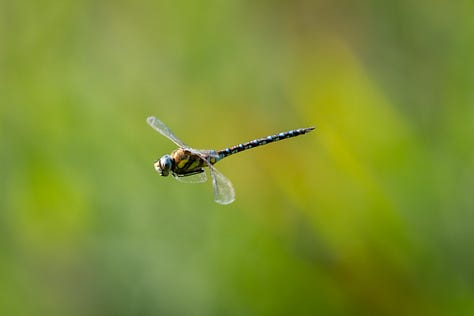
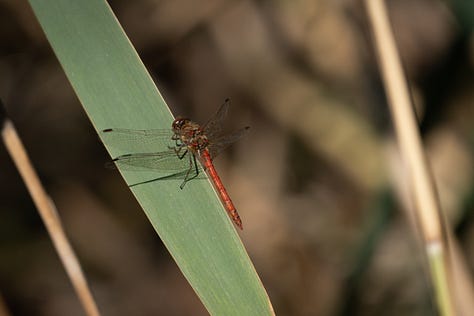
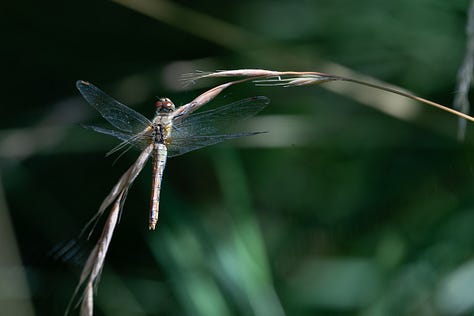
But I’m getting ahead of myself! Before you get anywhere near the boardwalk you encounter a manmade clearing in the reeds – the old cress beds. A 1909 book extract describes how a dam allowed this flatter area to flood, so that watercress could be grown for export to nearby London.
In the late 1930s about ten men were employed full time with another three being taken on at busy periods. There were also six women who bunched up the cress. Lorries loaded with wicker baskets full of cress went to London’s Covent Garden Market. … The main cress beds ceased production after the 1950s although W Hallworth was still supplying the markets and the village in 1965.
(L W Price, Foulmire Moor and Fowlmere RSPB reserve, 1994)
Less fruitful on these visits, the main hide looks out over a (currently water-depleted) mere. There were unusual visitors – Yellow Wagtails – and a flock of Lapwing. But little else to be seen. The lizards on the boardwalk were still waiting for the sun to warm the wood in the afternoon, so no sightings of those, either.
Away from the reserve, I spotted two more of this seasons’ treats I want to share with you. First, a spider that I have been dying to see for years: the Wasp Spider.
That zig-zag form in the web is called a ‘stabilimentum’ and no one really knows what it’s for. These beautiful creatures look fearsome, but are not medically significant. Unless you’re a male Wasp Spider! They wait for the female to moult so that her jaws are soft prior to mating, but many still get killed and devoured after the act.
Equally as beautiful, the mossy rose gall or ‘robin’s pincushion’ seems to be having a good year.
This beautiful form is the rose’s immune response to wasp larvae that hatch from eggs laid in the leaf buds. Scientists aren’t sure exactly how, but the larvae stimulate the rose to develop large cells in the area, which the larvae eat. They also stimulate layers of tissue to develop, which form the fibrous growth pattern you can see above.
As you can see, nature is still busy being delightful and intriguing (and slightly weird) as summer starts to draw to a close. I’d love to know what you’ve seen over the past fortnight!
Thanks for reading along,
Gem


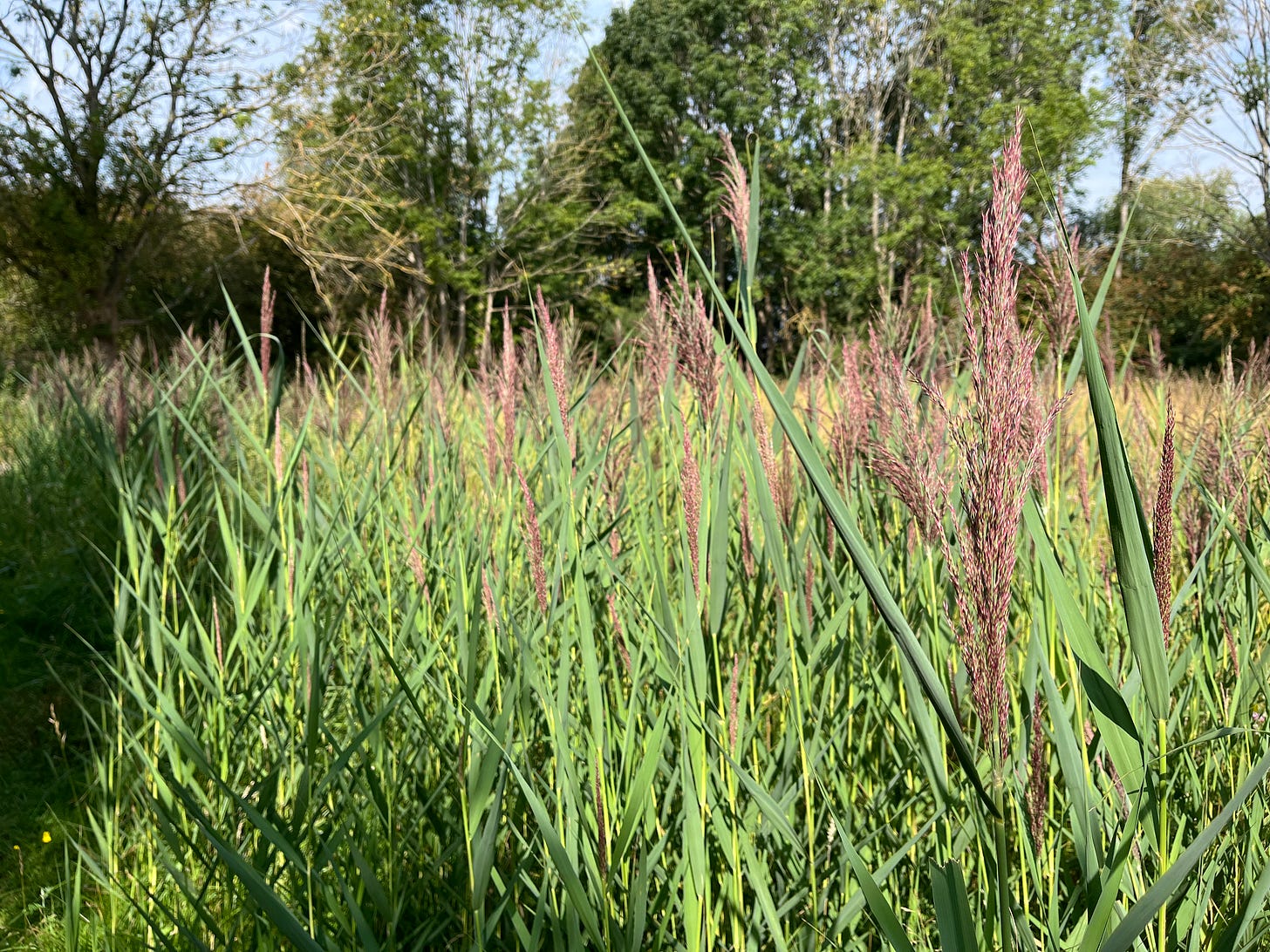
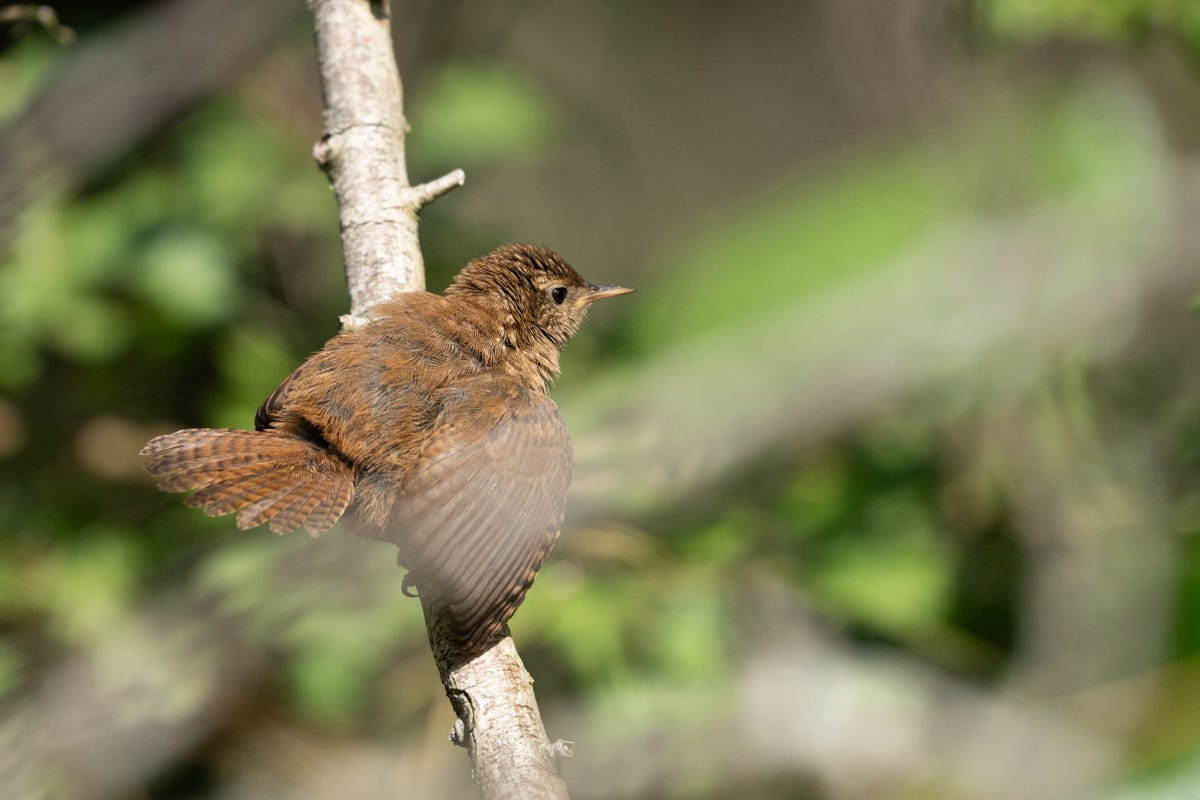
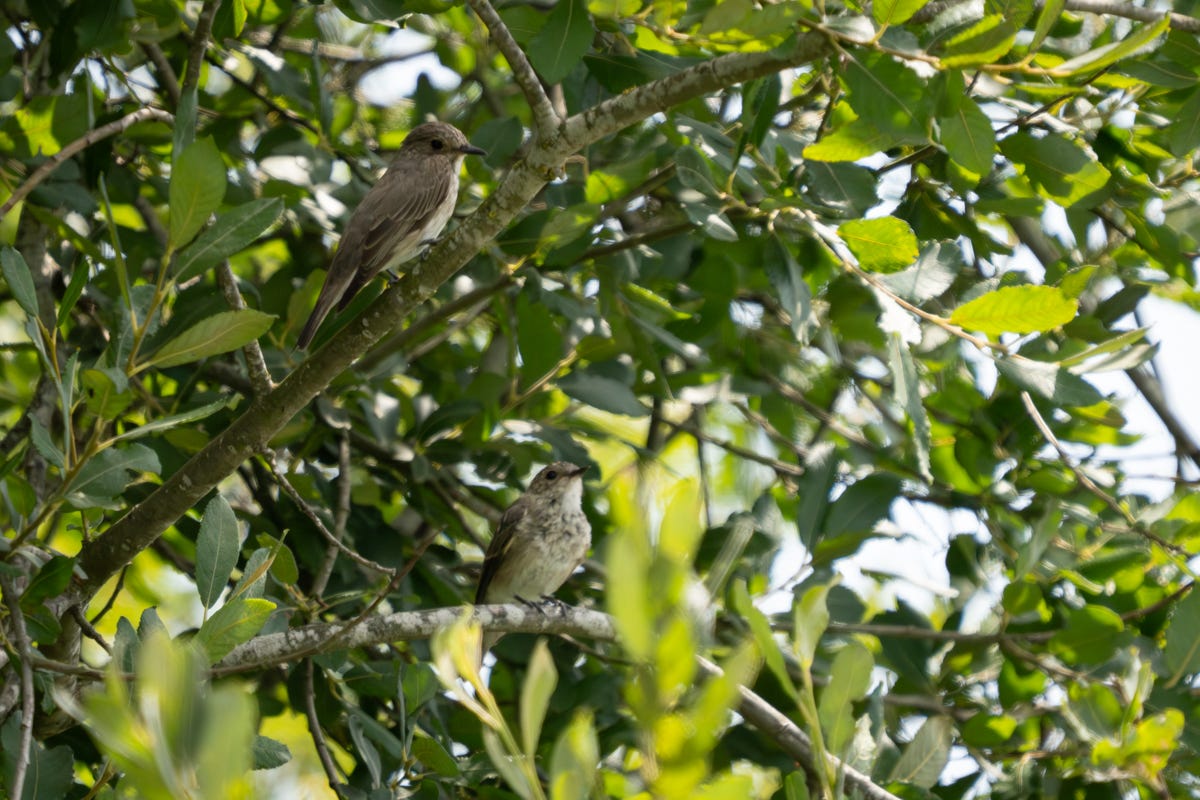


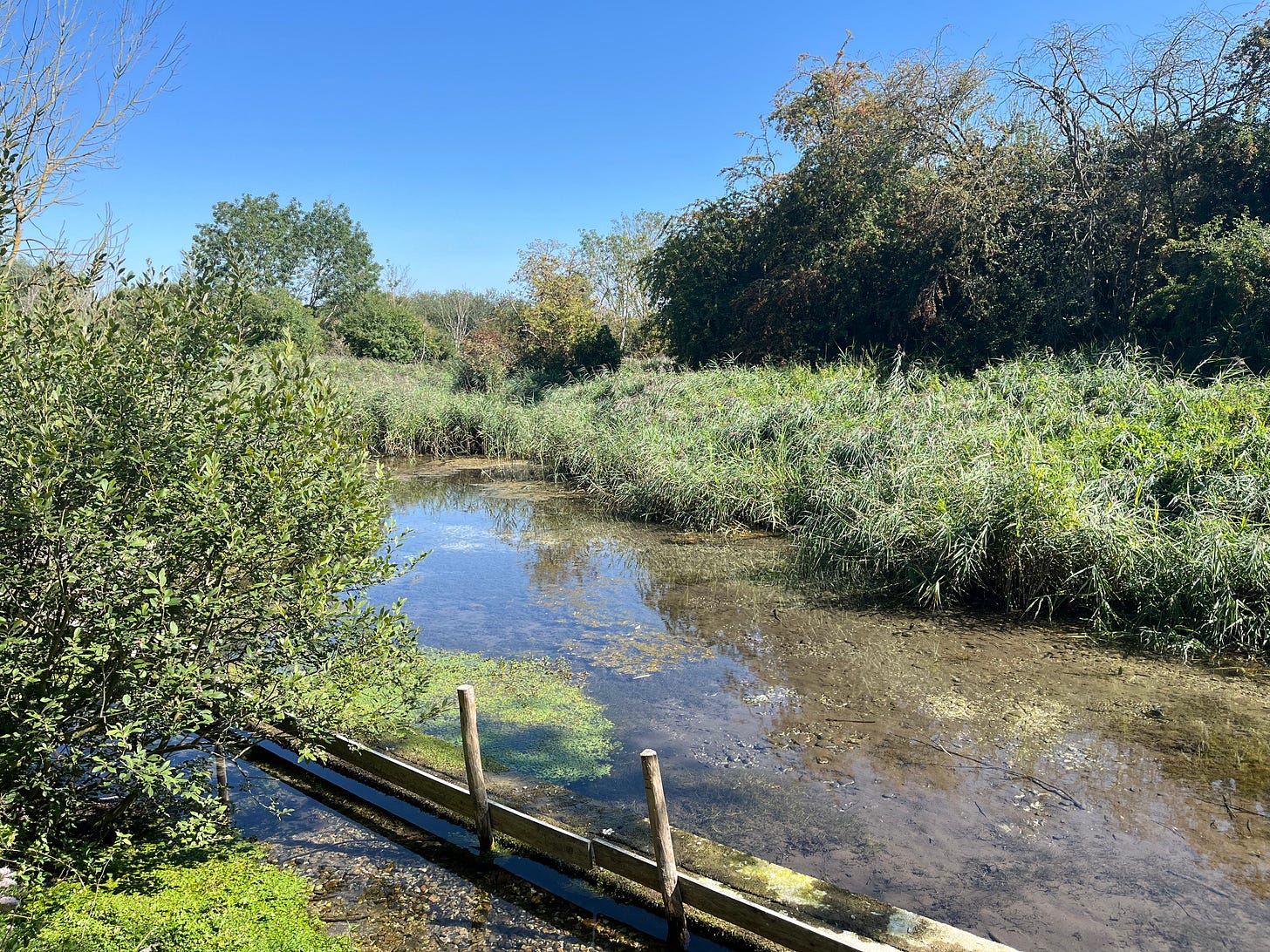
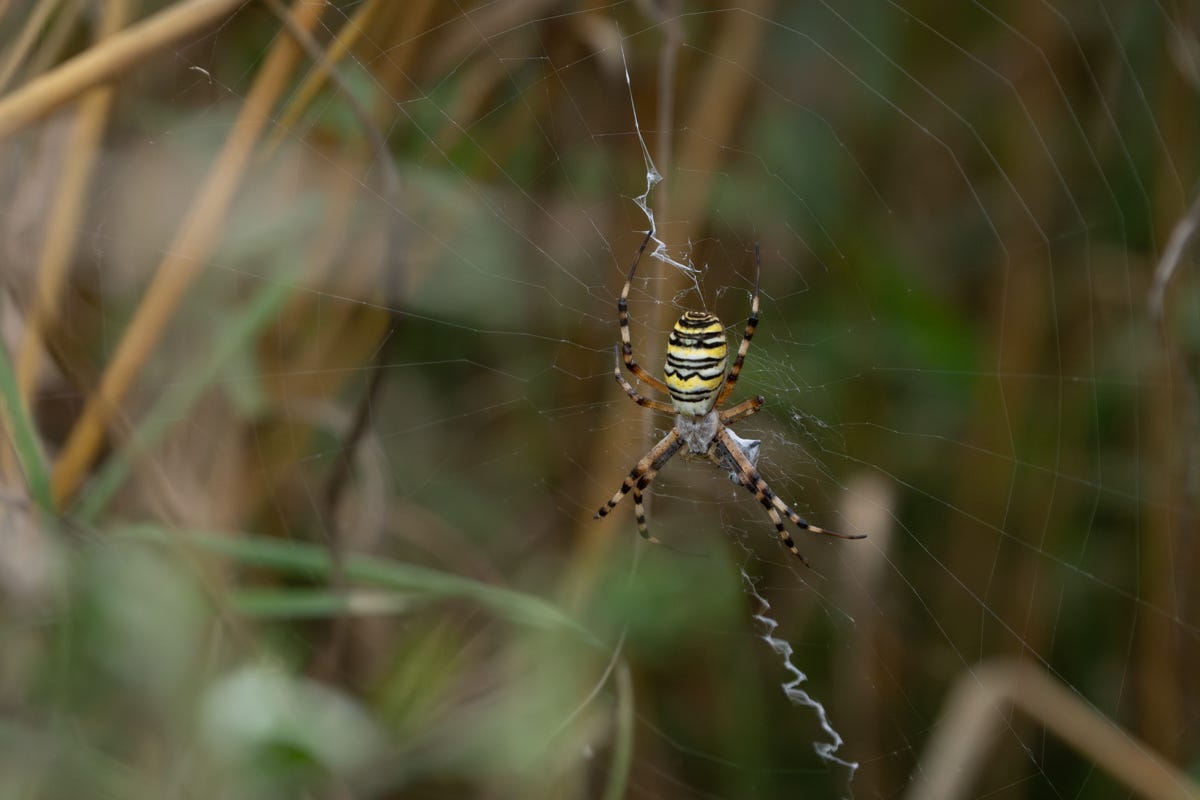
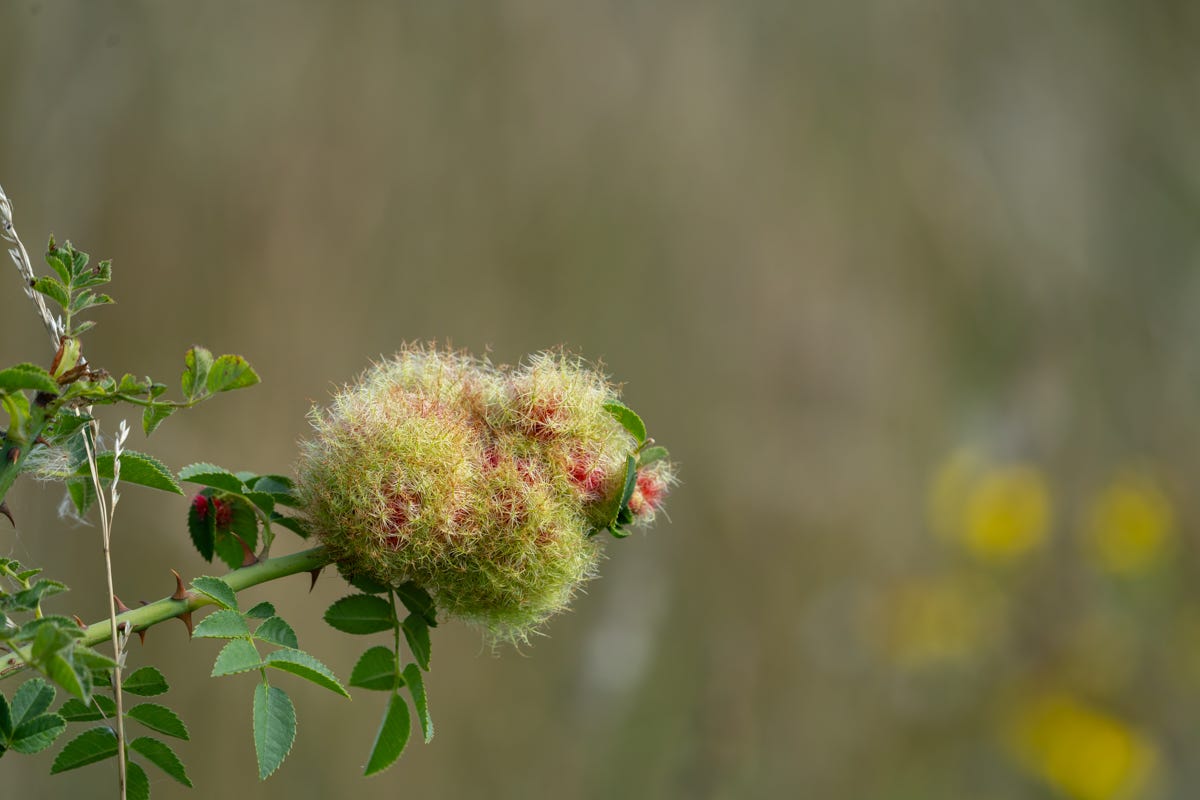
What a delightful trip report. I really enjoyed reading. And despite having some 25 years of birdwatching under my belt this is the first time I learn that the white chest band on common buzzards has a name!
I really enjoyed this. I love reading and learning about an environment that might superficially resemble the one I live in (temperate) but with all different species, many related to the ones I see. It is like they are parallel (or something.) It makes me dream of going to Europe and observing and photographing all the not-necessarily-rare wildlife.
I was particularly excited to learn about the wasp spider. I listened to this in the car (read by the surprisingly good AI voice) before coming back to look at the pictures, and wondered if the wasp spider was related to the writing spiders of the Southeastern US. Sure enough, they are in the same genus - Argiope. Some of ours make the straight line of ZZZZZ's, and others sit in an X of four of those lines, at the center of their webs. I'm thrilled to know these are called "stabilimentum" as now I can write about them more accurately and succinctly!